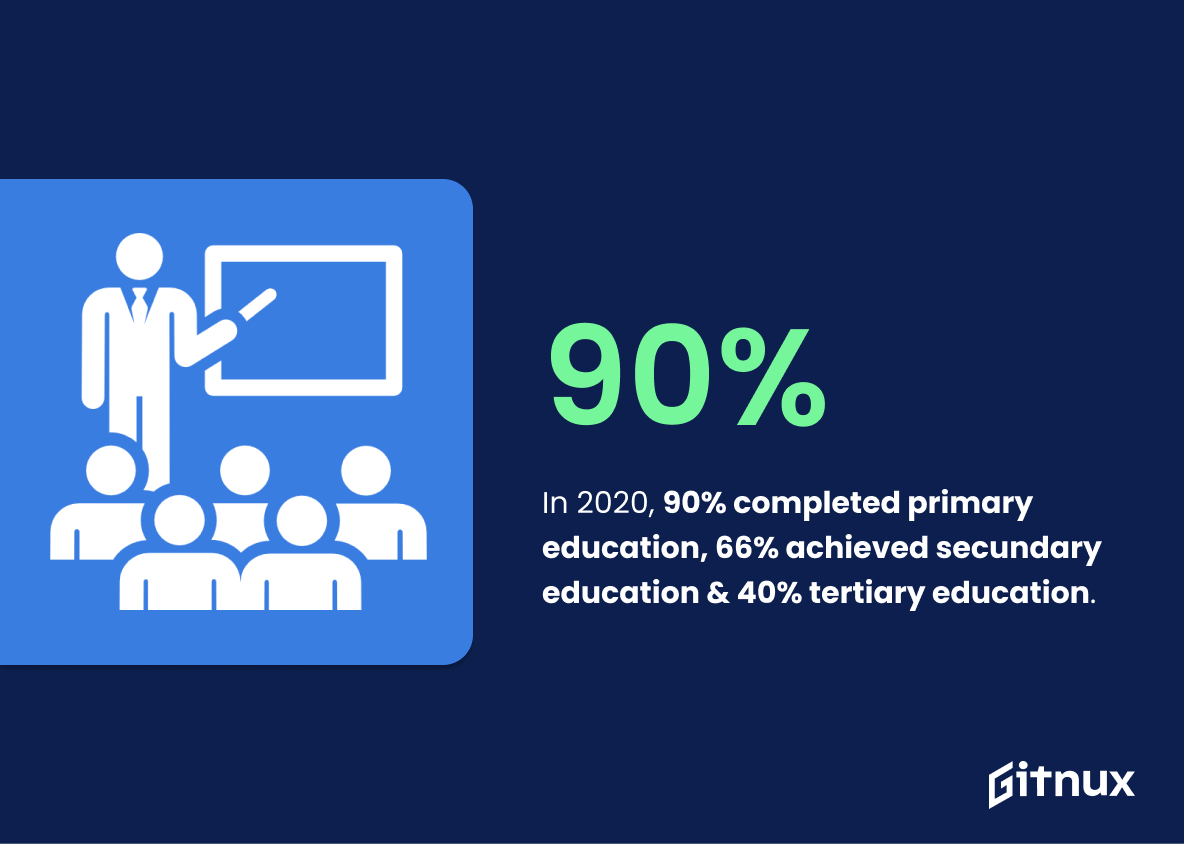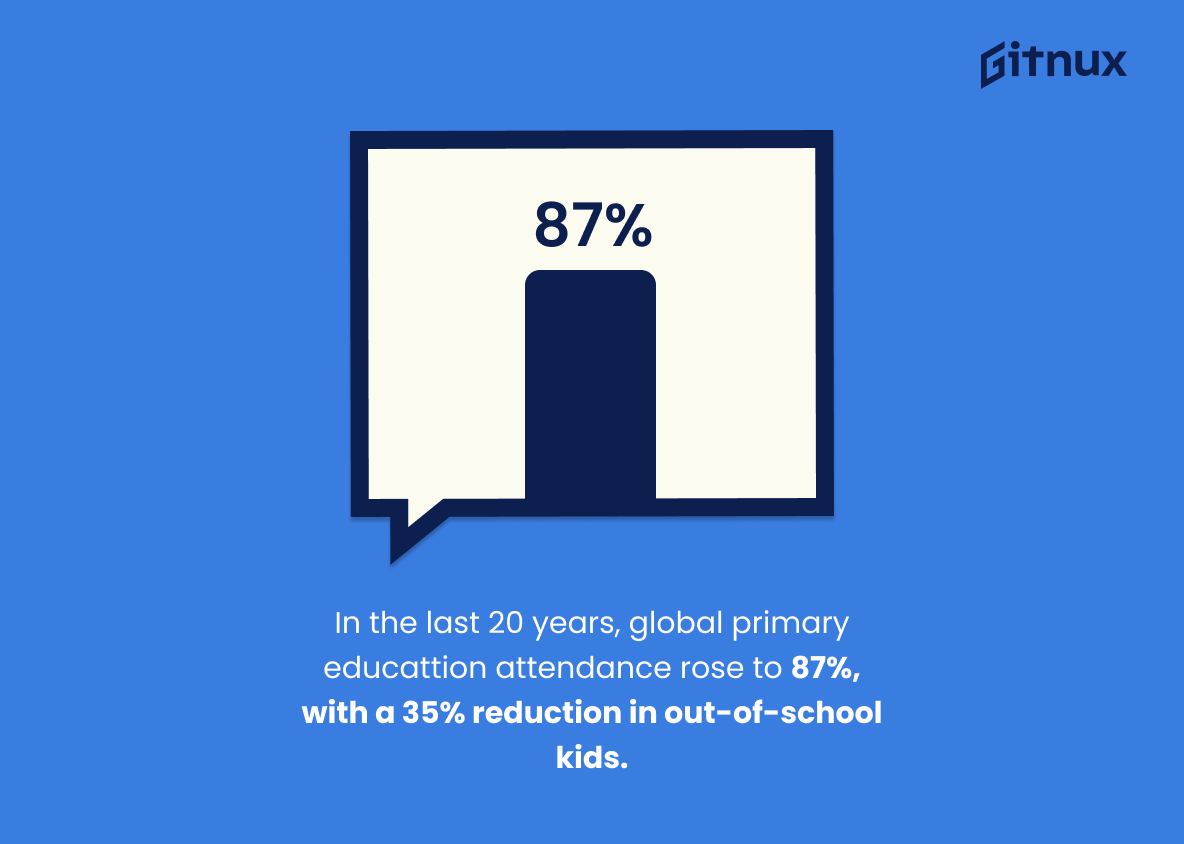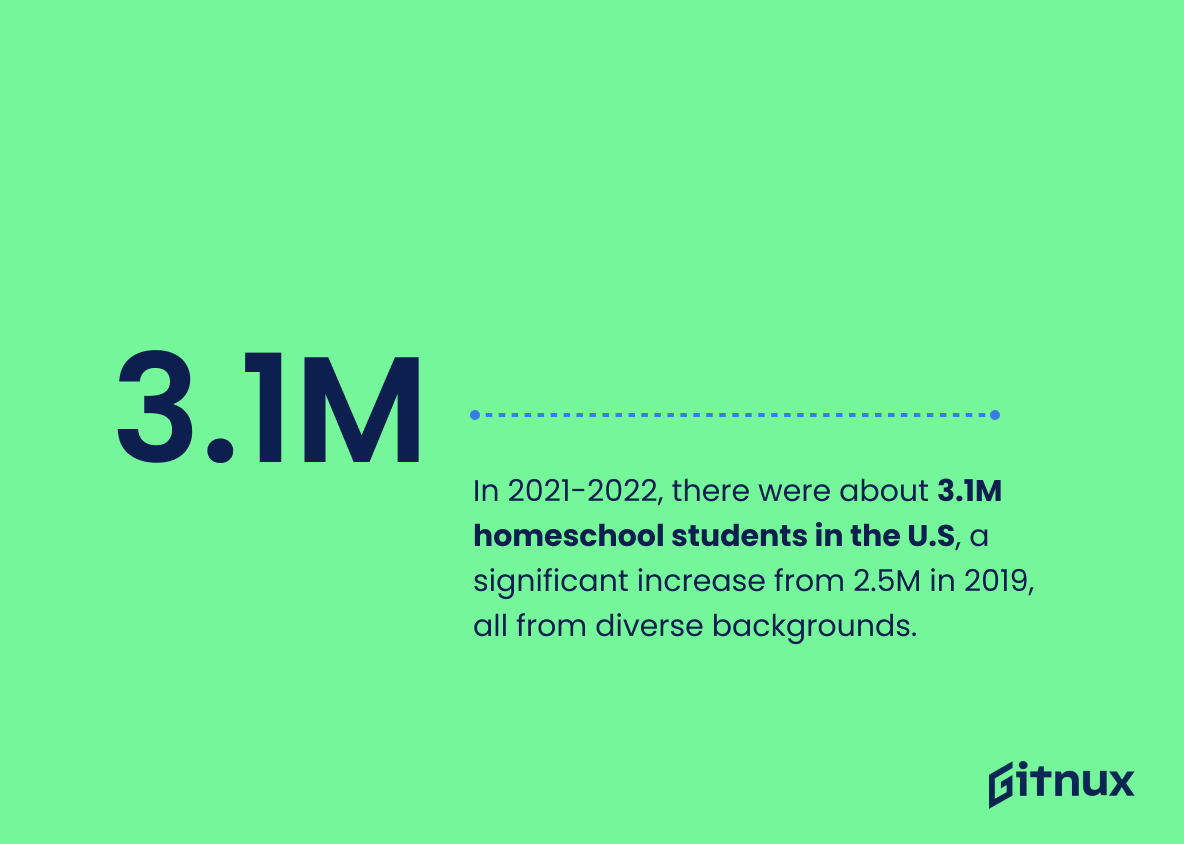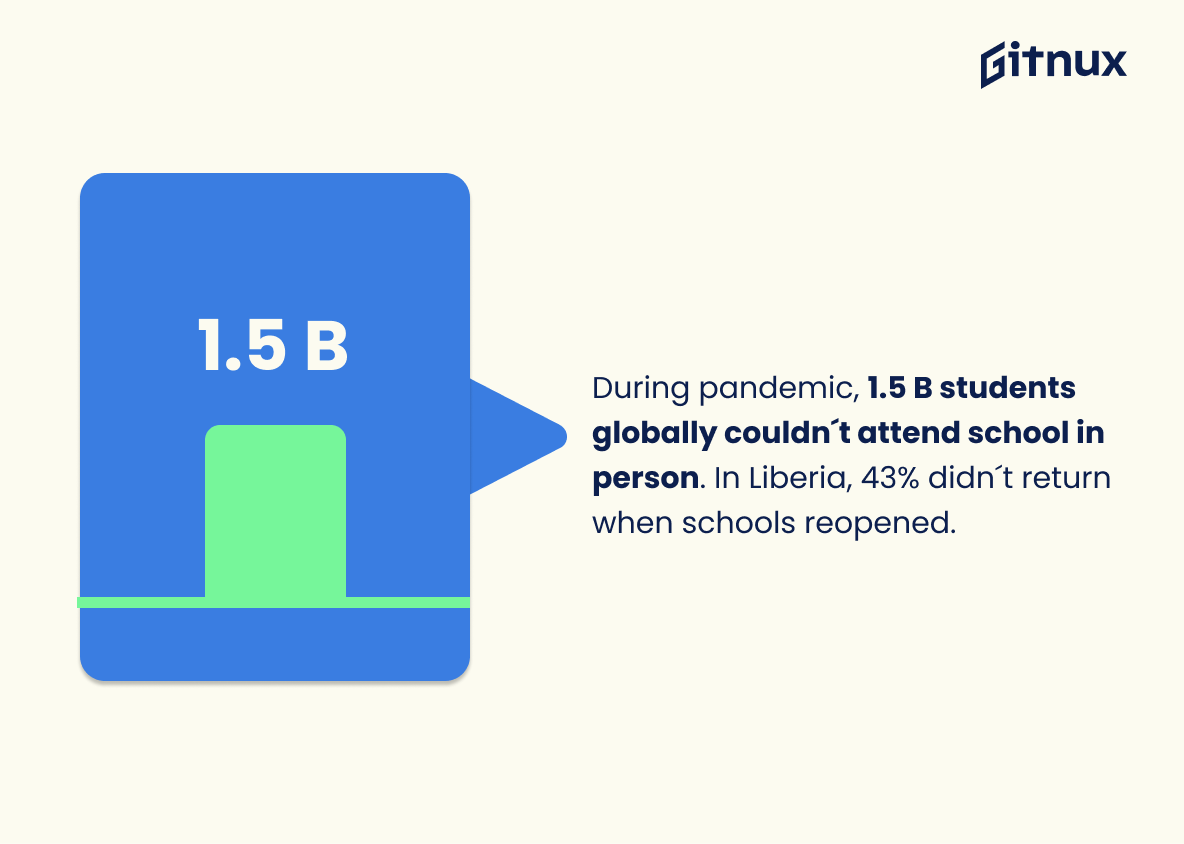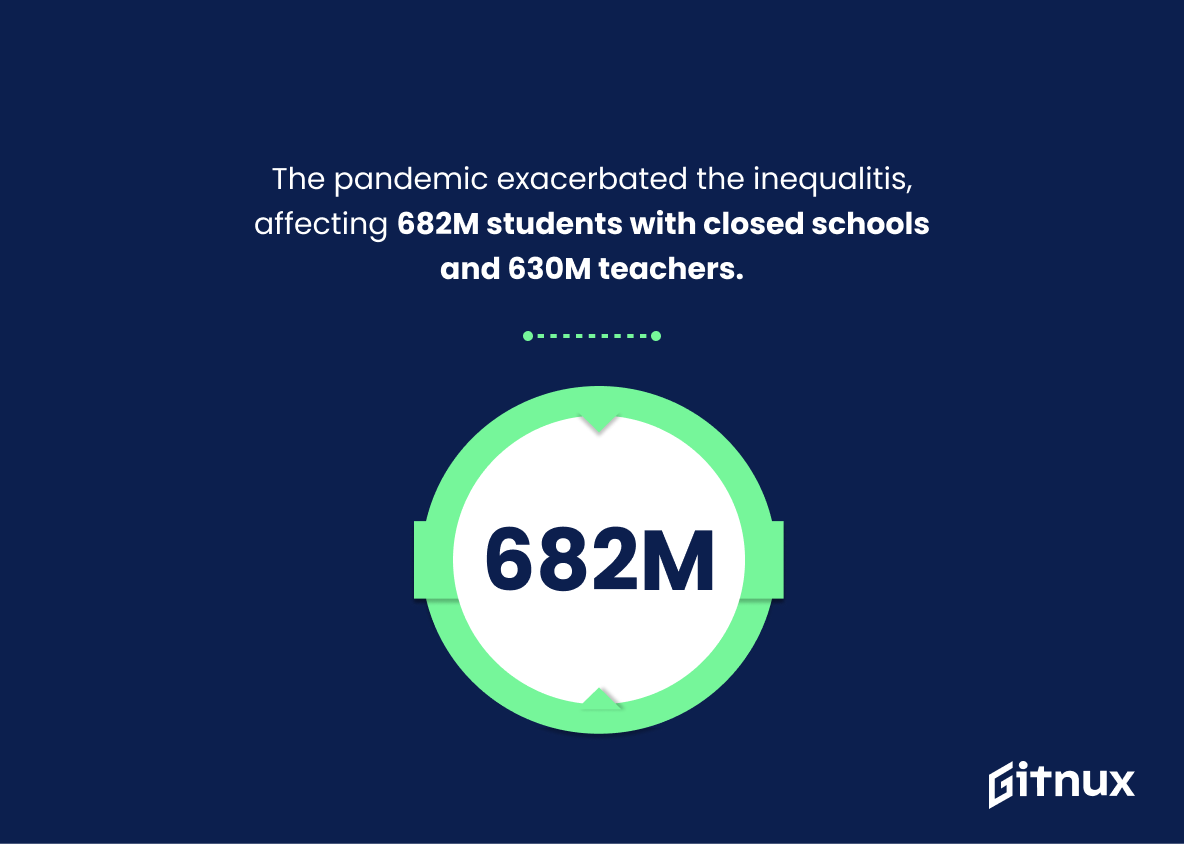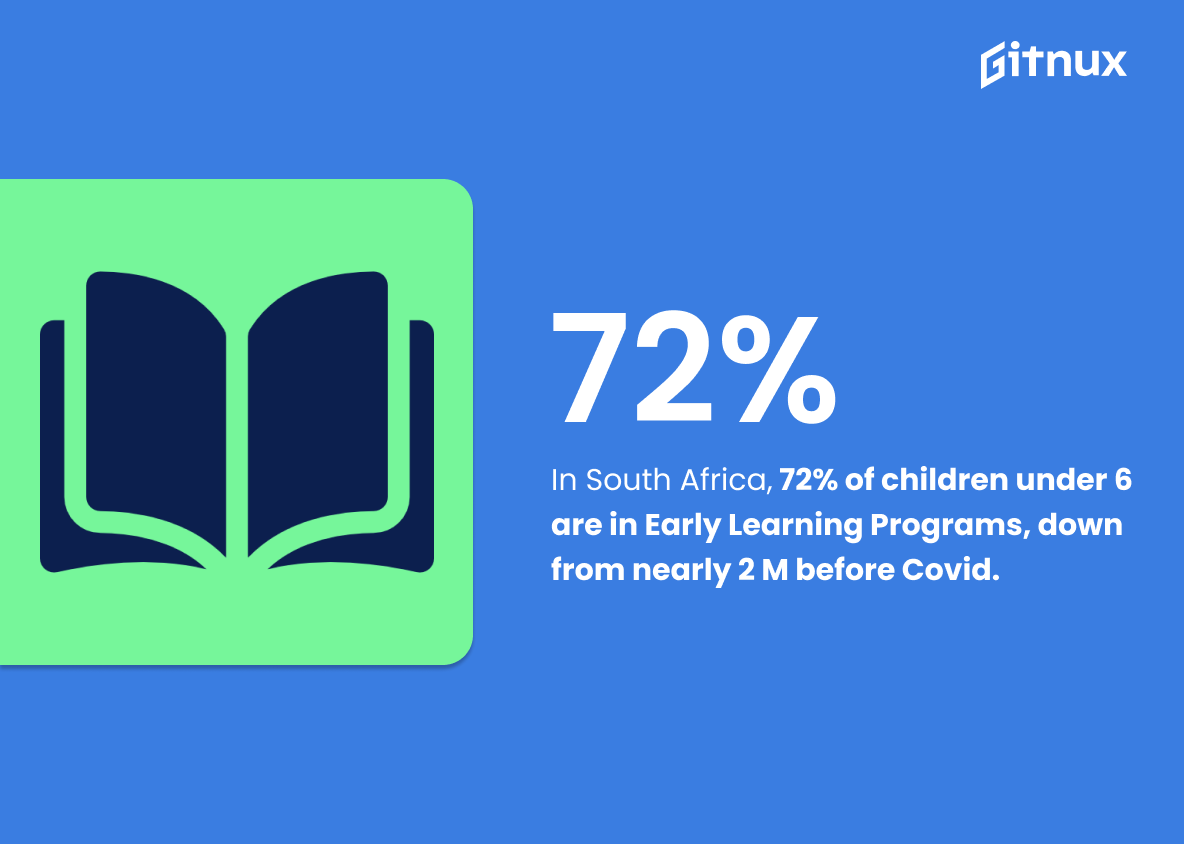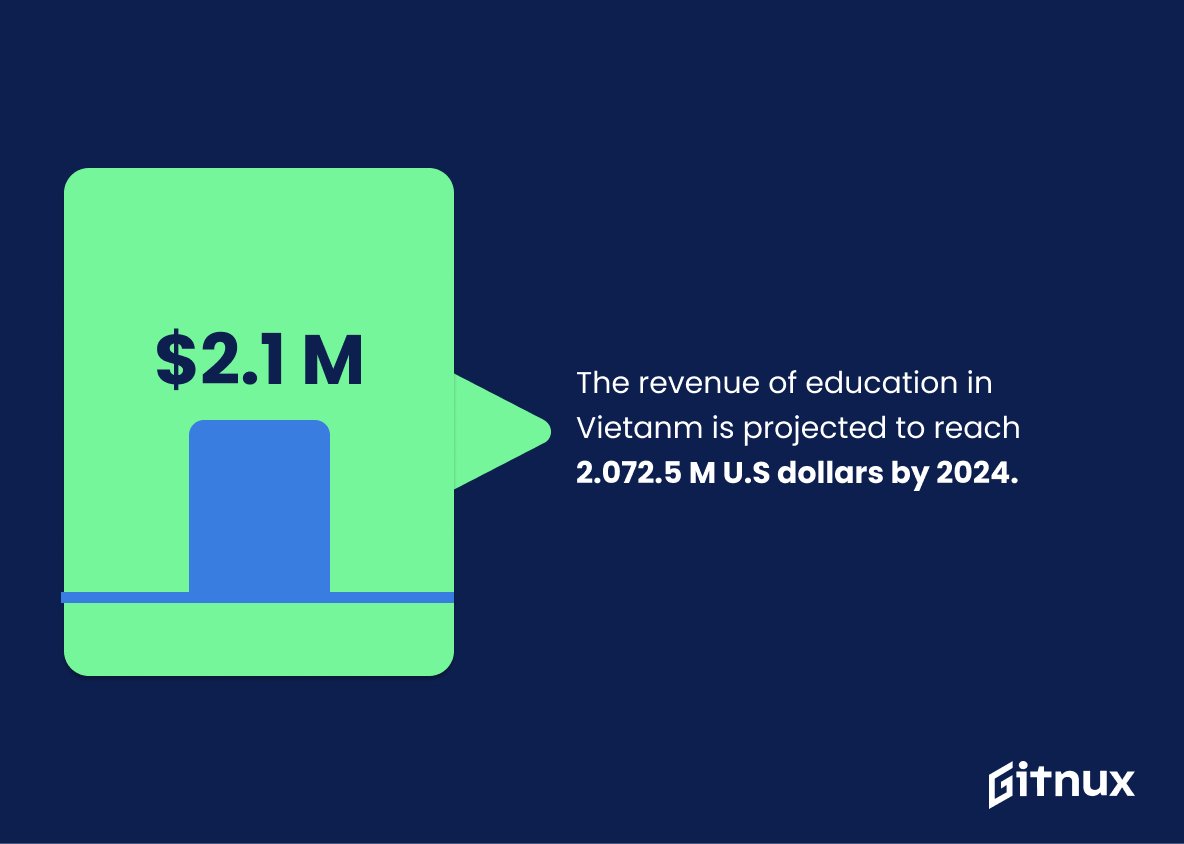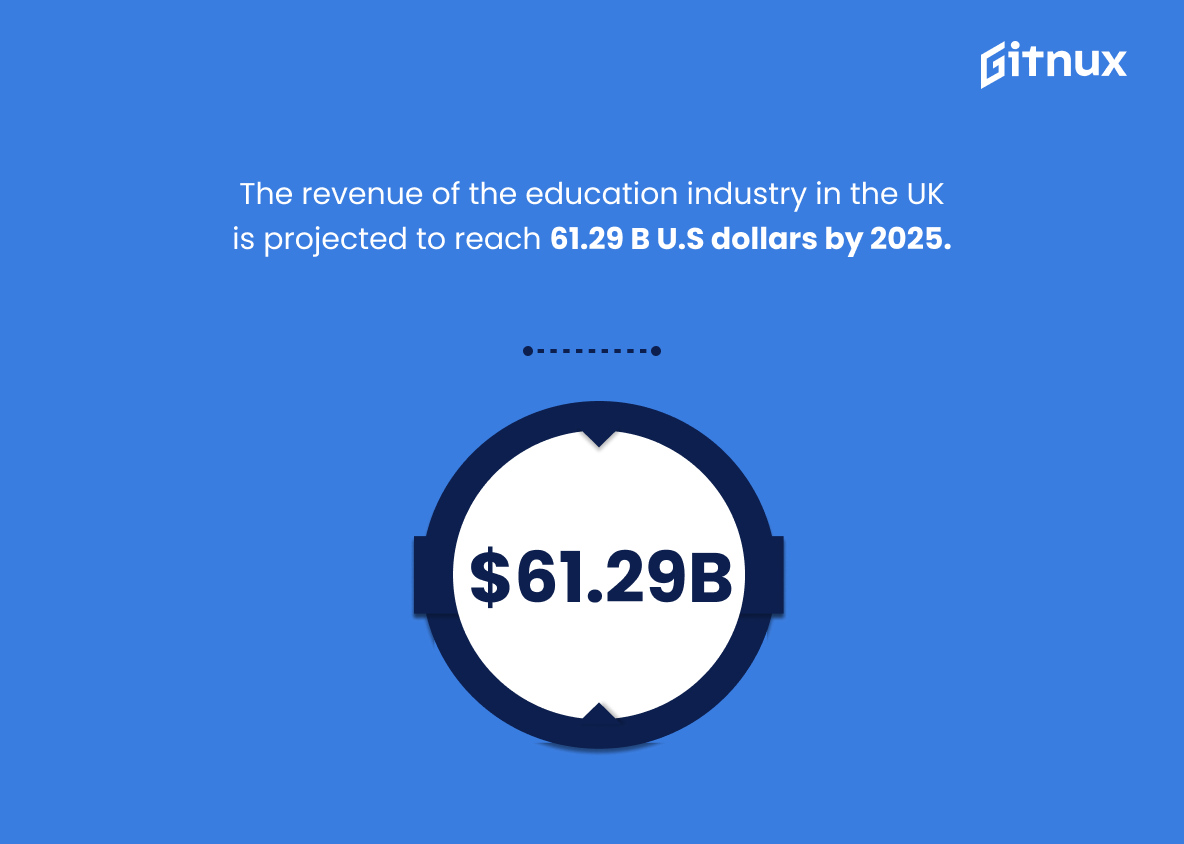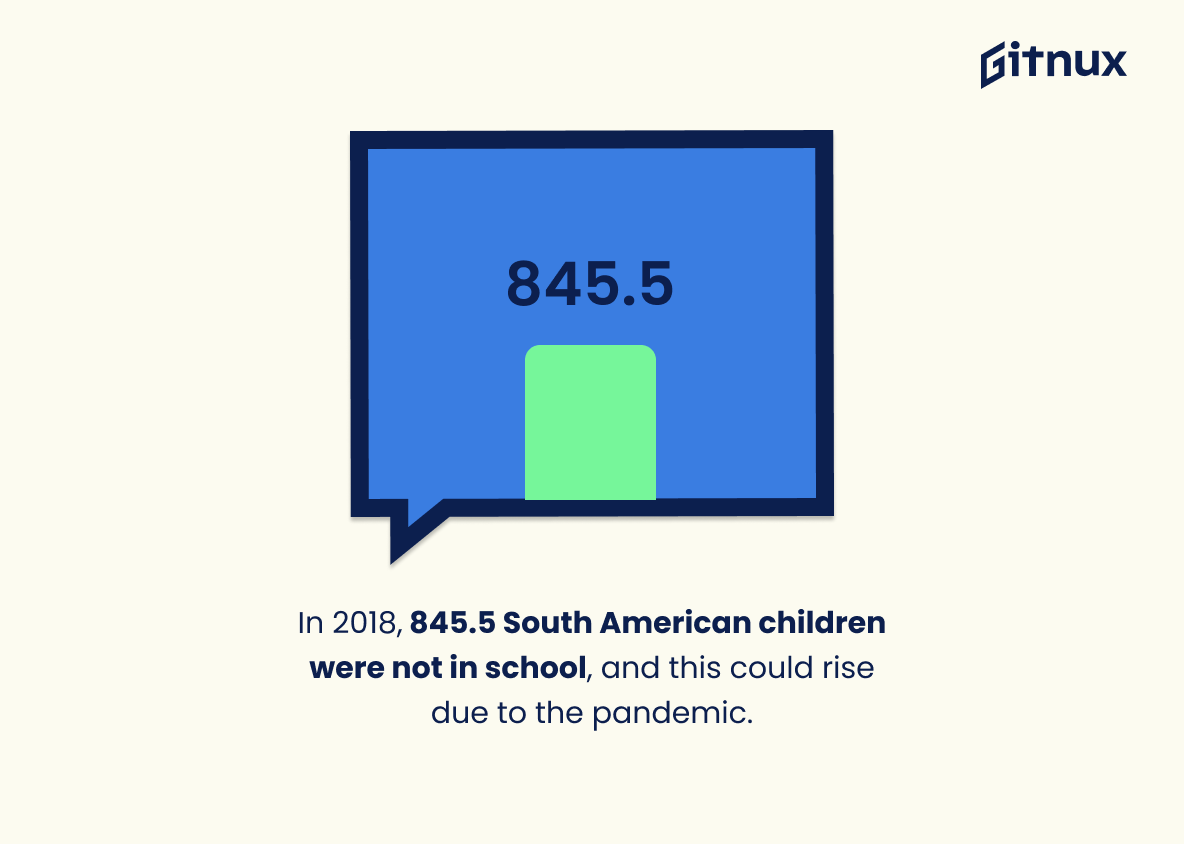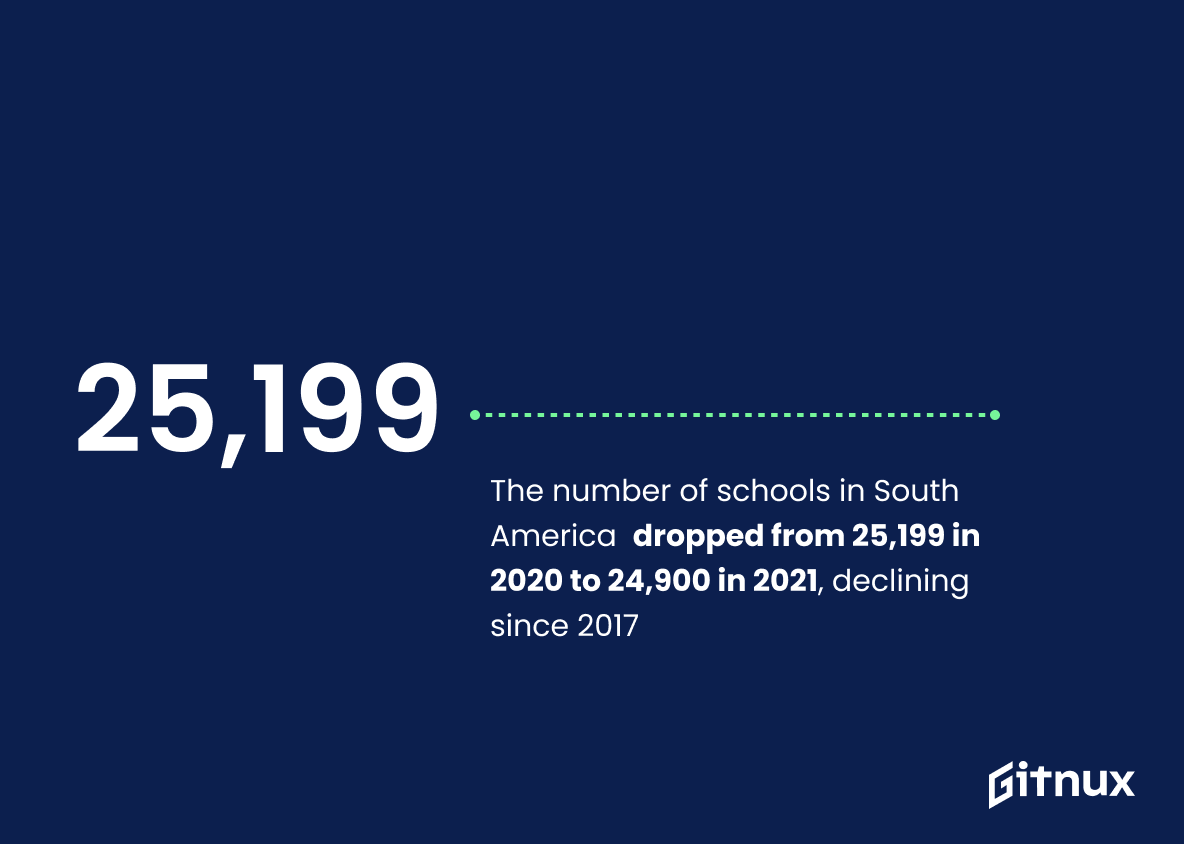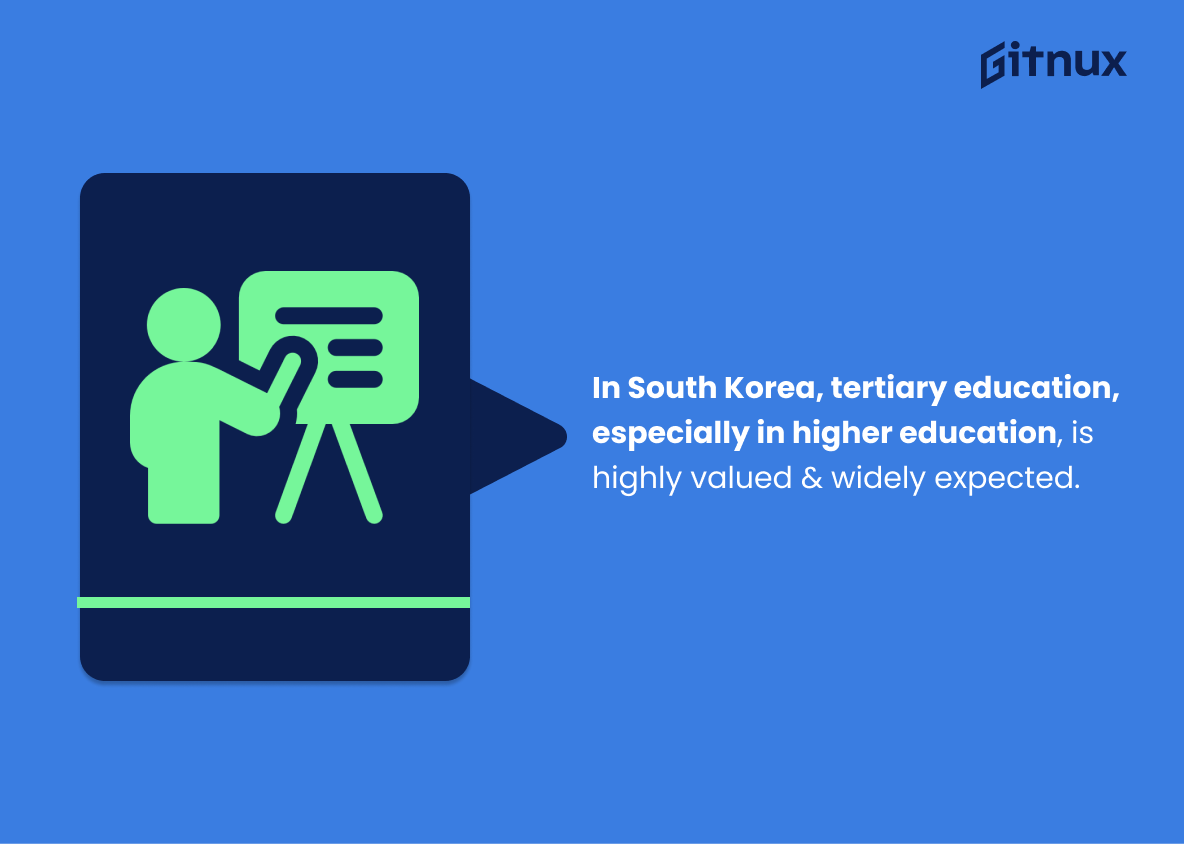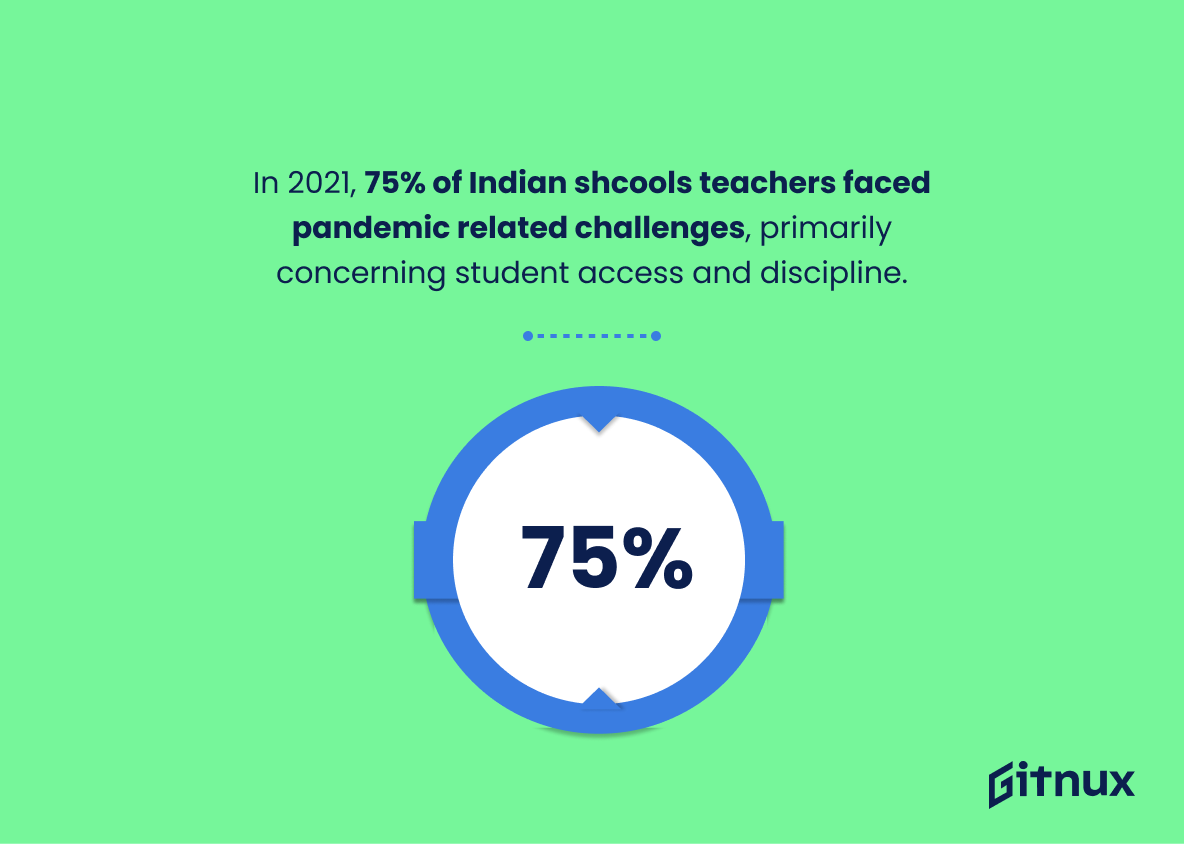Education is a vital part of our society, and it is important to understand the trends and statistics in the industry. In this post, we will explore the latest trends in the education industry and discuss how they can be used to inform decisions.
We will also look at the impact of technology on the industry and how it is changing the way we learn. Finally, we will discuss the implications of these changes for the future of education. Thanks for joining us on this journey.
Education Industry: The Most Important Statistics
In South Africa, 72% of children under 6 years old are enrolled in an Early Learning Programme, but this figure was closer to 2 million before the COVID-19 pandemic.
The worldwide e-learning market is projected to reach US$243 billion by 2022, indicating a strong economic performance in the education sector.
Education Industry Statistics Overview
Around 90% of the world’s population had completed a primary education in 2020, with only 66% and 40% having attained secondary and tertiary education respectively, with a literacy gender gap that has been shrinking in recent years.
This shows the progress that has been made in terms of educational attainment, as well as the disparities that still exist between different countries, genders, and age groups. It also highlights the importance of providing access to education for all, regardless of gender, age, or location.
Over the past two decades, the global adjusted net attendance rate for primary education has increased to 87%, and the number of out-of-school children has decreased by 35%.
Thus, there has been progress in achieving universal primary education, which is essential for providing children with the skills and knowledge they need to succeed in life. Additionally, the statistic highlights the need to focus on marginalized groups, as they are disproportionately affected by lack of access to education.
There were about 3.1 million homeschool students in 2021-2022 in the United States, representing a drastic increase from 2.5 million in 2019. Demographically, homeschool students come from a wide variety of backgrounds.
Homeschooling rates have grown rapidly since 1999 and have since remained steady at around 3.3%, but during the first week of Phase 1 of the Household Pulse Survey, 5.4% of U.S. households with school-aged children reported homeschooling, and by fall, 11.1% reported homeschooling.
1.5 billion students in 188 countries were unable to attend school in person due to the pandemic, with 43% of students in Liberia not returning when schools reopened in December 2020 and 750,000 out-of-school children in South Africa between March 2020 and July 2021.
This fact brings out the lasting effects of the pandemic on the education of an entire generation, and the danger of the increasing number of out-of-school children. It also emphasizes the need for continued support and resources to ensure that students are able to access quality education and reach their potential.
Inequalities in education have been greatly increased due to the COVID-19 pandemic, with 682 million students in countries with closed schools and 1.5 billion students and 630 million teachers affected.
Therefore, we can see a need for increased access to education for all students, regardless of their socio-economic background, in order to ensure that everyone has the opportunity to receive a quality education.
In South Africa, 72% of children under 6 years old are enrolled in an Early Learning Programme, but this figure was closer to 2 million before the COVID-19 pandemic.
This decline is likely due to financial strain and lack of awareness of the importance of early education. It also shows the importance of investing in quality early childhood education, which has been proven to have long-term positive effects on a child’s later-life outcomes.
In 2020, 55% of 3-5 year olds were enrolled in school, with a higher enrollment rate for 5 year olds (84%) than for 3-4 year olds (40%).
These rates were lower than in 2019, prior to the coronavirus pandemic, and there were few measurable differences in enrollment rates of young children by racial/ethnic group or by sex. This decrease in enrollment is concerning, as it suggests that the coronavirus pandemic has had a significant impact on the education industry and access to education for young children.
Teachers are facing high burnout and attrition rates due to their workloads, but the McKinsey Global Institute’s 2018 report on the future of work suggests that teachers will continue to grow in the United States and other countries, and that current technology can automate 20-40% of teacher hours.
Coding classes are becoming increasingly popular in schools worldwide, with the US, Australia, and the UK leading the way in providing coding education to students of all ages – this is important for the Education Industry as it reflects the growing demand for coding skills in the job market.
The revenue of education in Vietnam is projected to reach 2.072,5 million U.S. Dollars by 2024.
This provides an indication of the growth of the education industry in Vietnam, which can be used to inform decisions about investments, resources, and policy changes.
The revenue of the education industry in the United Kingdom is projected to reach 61.29 billion US Dollars by 2025.
90% of the world’s population had completed primary education, 66% had completed secondary education, and 40% had completed tertiary education in 2020, with more females than males.
The worldwide e-learning market is projected to reach US$243 billion by 2022, indicating a strong economic performance in the education sector.
Therefore, the education sector is performing well economically, which is beneficial for the local markets as it provides jobs and generates greater value in global markets.
845.5 children in South Africa were not enrolled in school in 2018, and this number is expected to increase due to the coronavirus pandemic, with a higher share of females able to read and write.
This highlights the major obstacle South Africa faces in its education system – a high number of children not in school. It also foregrounds the gender disparity in literacy rates, which could indicate a lack of access to education for females. This statistic is important to consider when looking at the overall education system in South Africa.
The number of schools in South Africa decreased from 25,199 in 2020 to 24,900 in 2021, and has been decreasing since 2017.
A decrease in the number of schools indicates that there is a lack of resources and funding for education, which can have a negative impact on the quality of education and the overall development of the country.
In South Korea, tertiary education is highly valued and is seen as a norm in society, particularly when it comes to higher education.
South Korean students living in Seoul have increased their time spent on private education in recent years, with the exception of 2020, when there was a decrease.
75% of school teachers in India faced challenges in 2021 due to the coronavirus pandemic, mainly gaining access to students and lack of discipline among them.
This displays the difficulties faced by teachers in transitioning to online classes, and the need for better access to technology and improved student discipline in order to ensure successful online teaching.
37% of parents reported internet recharge costs and device affordability as the biggest challenges for online learning.
It is also necessary to take a look at the financial burden that many parents face when trying to provide their children with access to online learning. This can have a significant impact on educational outcomes, as students without access to the necessary resources may be unable to take advantage of online learning opportunities.
Supplementary Statistics
In 2020, the global education market was estimated to be worth USD 5.4 trillion.
It highlights the sheer magnitude of the market, and the potential for growth and development within it. It also serves as a reminder of the importance of education in today’s world, and the need for continued investment in the sector.
Approximately 260 million children and adolescents are out of school worldwide.
This demos the need for increased investment in education, as well as the need for innovative solutions to ensure that all children have access to the education they need to reach their full potential.
The education technology market is expected to grow at a CAGR of 18.1% from 2020 to 2027.
It is a key indicator of the industry’s success and a sign that the education industry is on the rise. This statistic is an important piece of information for anyone interested in the education industry, as it provides insight into the current state of the market and its future prospects.
The global market for online education is projected to reach USD 245.7 billion by 2026.
With the global market for online education projected to reach USD 245.7 billion by 2026, it is clear that the education industry is rapidly adapting to the digital age. This statistic is a clear indication of the potential of online education and its ability to reach a wider audience.
In 2021, there were over 114,000 K-12 schools in the United States.
This is a powerful reminder of the sheer scale of the education industry in the United States. With over 114,000 K-12 schools, it is clear that education is a major part of the American economy and culture. This statistic serves as a reminder of the importance of investing in education and the need to ensure that all students have access to quality education.
The United States spends an average of USD 12,756 per student each year.
It speaks to the commitment of the nation to invest in the future of its citizens, and the importance of providing quality education to its students. It is a powerful reminder of the importance of education, and the need to continue to invest in the education system to ensure that students have the resources they need to succeed.
Approximately 79.6% of high school graduates in the United States enrolled in college in 2018.
The majority of high school graduates are taking the initiative to further their education and pursue a college degree. This is a positive sign for the future of the education industry, as it indicates that students are taking their education seriously and are investing in their future.
Since 1980, college tuition fees in the United States have increased by over 200%.
Thus, there is a need for more affordable options for students and families, as well as the need for more financial aid and scholarships to help make college more accessible. It also serves as a warning to those considering college that the cost of tuition is likely to continue to rise in the future.
Only 42% of K-12 schools in the United States offer computer programming education.
With only 42% of schools offering this type of education, it is clear that there is a significant gap in the availability of this important skill. This lack of access to computer programming education can have a long-term impact on students, as it can limit their ability to pursue certain career paths and gain the skills necessary to succeed in the modern economy.
The European Union hopes to have 80% of high school graduates acquiring basic digital skills by 2025.
The European Union’s goal of having 80% of high school graduates acquiring basic digital skills by 2025 is a testament to the importance of digital literacy in the modern world. As technology continues to evolve, it is essential that students are equipped with the skills necessary to navigate the digital landscape. This statistic is a reminder of the need for educational institutions to prioritize digital literacy in their curriculums, in order to ensure that students are prepared for the future.
The percentage of the world’s population with access to a computer at home was 50.8% as of 2021.
Not everyone has access to the same educational opportunities, as access to a computer at home is a key factor in being able to access online learning resources. This statistic is a reminder of the importance of bridging this divide and ensuring that everyone has access to the same educational opportunities.
In 2019, Finland ranked first in the Human Capital Index, a ranking that combines indicators of education, skills, and health.
This demonstrates the potential of education to improve the lives of individuals and societies, and serves as an example of what can be achieved when education is prioritized. This statistic is a powerful reminder of the importance of investing in education, and its potential to create a brighter future.
Worldwide, around 89% of children of primary school age are enrolled in school.
Despite the many challenges faced by countries around the world, the majority of children are able to access primary education. This statistic is a testament to the hard work of educators, governments, and other stakeholders in the education industry, and serves as a reminder of the importance of continuing to invest in education.
The global corporate eLearning market is expected to reach USD 49.8 billion by 2026.
Businesses are increasingly recognizing the value of eLearning as a cost-effective and efficient way to train their employees. As the corporate eLearning market continues to expand, it is likely to have a positive impact on the education industry as a whole, as more companies invest in eLearning solutions.
Conclusion
In conclusion, the education industry is an ever-evolving and growing sector that is constantly adapting to the changing needs of students and educators. The statistics presented in this blog post demonstrate the importance of the education industry and its impact on the global economy.
Despite the challenges that the industry faces, it is clear that the education industry is a major contributor to the global economy and will continue to be so in the future.
References
https://www.census.gov/library/stories/2021/03/homeschooling-on-the-rise-during-covid-19-pandemic.html
nheri.org/research-facts-on-homeschooling/
growecd.org.za/2022/06/03/the-alarming-state-of-early-childhood-development-in-south-africa/
opencolleges.edu.au/informed/features/coding-education-important-implemented/
https://www.statista.com/forecasts/1224386/education-revenue-in-vietnam
https://www.statista.com/forecasts/1095321/education-revenue-in-the-united-kingdom
https://www.statista.com/topics/7785/education-worldwide/
https://www.statista.com/study/124051/top-100-companies-worldwide-education/
https://www.statista.com/topics/8314/education-in-south-africa/
https://www.statista.com/statistics/1262879/number-of-schools-in-south-africa/
https://www.statista.com/topics/5915/private-education-in-south-korea/
https://www.statista.com/statistics/1043760/south-korea-time-spent-on-private-education-per-student-in-seoul/
https://www.statista.com/statistics/1276114/india-most-common-challenges-faced-by-teachers-to-conduct-online-classes/
https://www.statista.com/statistics/1276374/india-most-common-challenges-faced-by-parents-with-at-home-learning/
https://www.fortunebusinessinsights.com
https://www.globalpartnership.org
https://code.org
https://eur-lex.europa.eu
https://ourworldindata.org
https://globenewswire.com
https://www.holoniq.com
https://www.grandviewresearch.com
https://www.worldbank.org
https://www.weforum.org
https://nces.ed.gov
